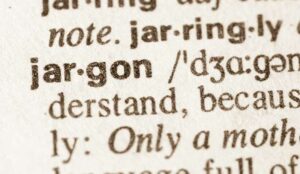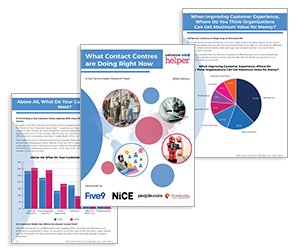Nick Martin at NICE reveals how AI-driven workforce management can ease scheduling pressures and support healthier, more resilient contact centre teams.
Contact centres have always faced employee retention challenges. The last several years – through a pandemic, the Great Resignation, and difficult economic conditions – have compounded the problem.
According to Forrester, 63% of contact centres deal with staffing shortages, and some of the root causes of attrition have shifted.
The Managing the Modern Contact Centre: Current Employer Trends Report found that workload and stress are today’s leading causes of unmanaged attrition.
Just over 40% of survey respondents expressed that employee workload and stress are too high; this was 11 percentage points higher than reported concerns about pay or benefits.
This increased stress can be attributed in part to the proliferation of digital channels and customer service expectations that are now 24/7/365 globally and across multiple platforms.
The number of digital channels through which organizations interact with customers isn’t going down anytime soon and will likely continue to increase. So, do businesses just accept that agent attrition may continue to grow, and that stress will increase?
We don’t have to believe that this is as good as it gets, particularly with the promising benefits of artificial intelligence (AI). AI can augment many activities in the contact centre, easing the pressure on agents and alleviating stress.
Workforce management (WFM) solutions that harness cutting-edge AI and science to evaluate employee cognitive load can help craft smarter schedules and elevate employee and customer experience.
To understand how these solutions can support healthier contact centres, let’s first discuss how stress and cognitive load impact agents.
Does Stress Really Matter?
“Stress” by definition isn’t inherently negative; some stress is actually good! Exercise places physical stress on the body, which is part of improving overall health.
Similarly, some demanding mental tasks cause cognitive stress, which can improve focus and decision-making. However, there is a limit, and excessive stress will negatively impact performance at some point.
In sports, this is easily observed: Push too hard and too fast, and injuries will quickly follow. With cognition, the negative impacts can be more subtle.
Stressed and burnt-out employees may experience challenges with memory recall, fatigue, and poor decision-making.
They also tend to be less engaged at work and show signs of difficulty in other areas of their lives. According to a Gallup report, disengaged employees report higher stress levels than those who are unemployed.
Beyond impacts on the individual, stress can affect the overall health of a company. Attrition and filling open roles are costly for businesses, and stressed employees may struggle to deliver even adequate customer service.
Lackluster customer service can tarnish a brand’s reputation for years. “Meh” level customer service can read as apathy to consumers, who will quickly look elsewhere if they can after a bad experience.
Ninety-four percent of consumers say positive customer service experiences make them more likely to purchase again and 40% have stopped doing business with a company due to poor service.
If your agents are stressed, overworked, and fatigued, they may struggle to deliver stellar customer service, no matter how well trained and skilled they are. It’s understandably tough to handle others’ needs when you’re completely depleted yourself.
So, Stress Matters – But Why Does It Matter More Than Ever Today?
Businesses no longer dictate where and how customers interact with them. Consumers are in the driver’s seat, and they demand that organizations handle their customer service issues anytime and on any channel.
In fact, 60% of contact centre leaders say the number of channels agents are expected to manage and communicate on has increased, according to the survey.
Email was mentioned by 83% of respondents, 72% said they use live chat, and 67% said they used social media to serve their customers, all equal to or higher than voice channels (67%).
The same survey reported that 48% of employees manage multiple channels concurrently most of the time, and 29% say it’s all of the time. Just 1% said employees never handle multiple channels.
But while employees today handle more channels, adding new levels of complexity and stress, KPIs have remained the same – and in some cases have become more stringent.
In today’s contact centre, employees face substantially increased demands from both the market and their employer. One critical factor driving those demands is how schedules are designed and deployed.
Today’s Scheduling Challenges Are Yesterday’s Dreams
A brief review of WFM history is useful in understanding what makes current scheduling approaches challenging.
While we don’t need to explore the life of Agner Krarup Erlang in depth for the purposes of this piece, it is important to note the impact of his early 1900s research.
His work around telephone traffic and waiting times formed the basis for staffing calculations foundational to most WFM solutions we have today.
However, Erlang’s research (and resulting calculations) assume that agents are single-skilled and that contact is handled in a continuous manner, quite different from the trained agents working across channels today.
The advent of skills-based routing (SBR) about a half-century after Erlang’s research meant that agents could now function in a multi-skilled environment.
Simulation was introduced to address the complexities of calculating staffing requirements needed for dynamically variable queue lengths in SBR environments.
SBR environments, which are now in practice at nearly all contact centres, do add substantial workload to employees.
Smartphones and the digital era introduced a major shift in how humanity communicates and in the number of platforms we have available to communicate on.
Today, nearly everyone has the power to call, email, chat, video conference, or direct message a business from almost anywhere.
Such capabilities were the stuff of science fiction in Erlang’s time. His research couldn’t even conceive of customers engaging in more than one mode of communication, let alone multiple simultaneously.
Although his calculations remain the foundation for most scheduling practices, contact centre leaders are increasingly stretching Erlang’s approach to apply it in a more complex environment.
What Causes Scheduling Pain Might Hold the Key to Solving It
The history of workforce management clarifies that, even with simulation, modern interactions between customers and businesses include behaviours contrary to long-standing assumptions.
The simultaneous way both customers and agents use digital channels layers complexity – and time – to each interaction. Chats and direct messages are a prime example.
It’s common to experience some delay in customers’ responses in a chat. During these pauses, employees may handle another message in the chat or an interaction from another channel. These non-linear communications introduce frustration in the scheduling process.
How do we best schedule for a series of interactions from multiple customers while accounting for different availability and hours for various channels?
Additionally, many WFM solutions currently lack the capability to assess workload thresholds for individual employees.
Schedulers will know an agent can handle a single interaction at a time. But what about the number of simultaneous interactions? For an individual agent, is it two, three, ten?
Beyond concurrency, employee thresholds around interaction intensity, reading ease in text-based channels, and cognitive effects of switching between platforms will also vary. Schedulers simply do not have a tool to assess cognitive stress for employees.
Instead, schedulers rely on intuition and guesstimates to land on the “optimal” amount of cognitive load a given employee can handle (which is also different from the load at which they perform their best). But in the age of AI in WFM, there might just be a better way.
This blog post has been re-published by kind permission of NiCE-ltd – View the Original Article
For more information about NiCE-ltd - visit the NiCE-ltd Website
Call Centre Helper is not responsible for the content of these guest blog posts. The opinions expressed in this article are those of the author, and do not necessarily reflect those of Call Centre Helper.
Author: NiCE-ltd
Reviewed by: Rachael Trickey
Published On: 6th Jun 2025 - Last modified: 10th Jun 2025
Read more about - Guest Blogs, NiCE






 NiCE (NASDAQ: NICE) is transforming the world with AI that puts people first. Our purpose-built AI-powered platforms automate engagements into proactive, safe, intelligent actions, empowering individuals and organizations to innovate and act, from interaction to resolution. Trusted by organizations throughout 150+ countries worldwide, NiCE’s platforms are widely adopted across industries connecting people, systems, and workflows to work smarter at scale, elevating performance across the organization, delivering proven measurable outcomes.
NiCE (NASDAQ: NICE) is transforming the world with AI that puts people first. Our purpose-built AI-powered platforms automate engagements into proactive, safe, intelligent actions, empowering individuals and organizations to innovate and act, from interaction to resolution. Trusted by organizations throughout 150+ countries worldwide, NiCE’s platforms are widely adopted across industries connecting people, systems, and workflows to work smarter at scale, elevating performance across the organization, delivering proven measurable outcomes. 









